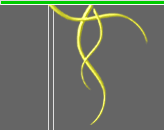MONOI has a privileged role in the Polynesian culture, rich in traditions. Indeed, its use dates back to the mists of time. It is associated with ancient rites and traditional pharmacopoeia: it is used in many curative preparations for diseases ranging from a mere cold to liver cancer. However, its first use until today indisputably remains cosmetology. The first navigators were already amazed at the wonderful hair and the satin-smooth skin of the Polynesian women. Without knowing it yet, they were praising the cosmetic virtues of MONOI. Thanks to its moisturizing proprieties, MONOI made the skin softer and naturally protected it from the harmful effects of the sun and the sea-salt. It was also the miracle-product which Polynesian women used to care for their legendary hair.
MONOI is a 100% natural product. In " reo ma'ohi " (the Tahitian language) MONOI means perfumed oil. It has been used since the mists of time by Polynesians for its moisturizing virtues as well as in traditional pharmacopoeia. No other product can boast 2,000 years of successful individual testing. It is specific to French Polynesia because it is made from 'tiare' flowers (Gardenia tahitensis) that are soaked in copra oil, two emblematic symbols of our Territory.
The most remarkable and famous application remains the use of tiare flowers in the making of MONOI. Only the result of tiare soaking in coconut oil can be called MONOI.
The tiare flower (Gardenia tahitensis), from the Rubiaceae family, is Tahiti's national flower. That variety, which is adapted to the Polynesian soils, grows everywhere in French Polynesia and blossoms all year long. The air is full with the sweet-smelling fragrance of this small white flower that grows on small 3-foot tall bushes.
This flower is native to the Pacific Region and requires the action of men for its asexual reproduction, which therefore is achieved without seeds. The tiare bushes grow best on soils of coral origin.
Tiare flowers are deeply rooted in the Polynesian cultural life. Indeed, they are much used in the flower necklaces which are offered to tourists as a welcome token on their arrival. The vahine (Polynesian women) also use them everyday to enhance their beauty.
Among all Tahitian plants, the tiare is the one which is most used in traditional medicine. Although its active principles are not known yet, one thing is certain: the tiare is absolutely NOT toxic. In infusion with other essential oils or as an external remedy, the tiare is used to treat various problems, from mosquito bites to headaches, and even liver cancer. Its flower buds, when crushed with a few drops of MONOI, are used to soothe ear-aches or can be applied on wounds after mixing them with breadfruit tree latex (Artocarpus altilis). " It appears undeniable to us that the tiare has a soothing effect. " (Pétard, 1986. Plantes utiles de Polynésie).
The most remarkable and famous application remains the use of tiare flowers in the making of MONOI. Only the result of tiare soaking in coconut oil can be called MONOI.
Therefore, tiare plantations were created. In the early morning, the buds are hand-picked and then delicately wrapped in tiare leaves (tiare pu'ohu) in order to be transported to the soaking place. There, the pistils are removed from the fresh flowers and the petals are soaked in refined copra oil for a minimum of 15 days with 12 flowers per liter of oil. This process, called " enfleurage " (flower soaking) will allow the flowers to release their fragrance and their components into the oil and thus trigger the fabulous alchemy which results in the unparalleled scent of MONOI.
Stories tell us that MONOI was associated with ancient rites including purification ceremonies or protection rites. MONOI has soothing, moisturizing and film-forming virtues. From its proprieties, it is used in sun products and also in hair-care products for its sheathing proprieties. It is used as a protective film against the cold and the wind. Divers are familiar with this since before each dive, they smear their bodies with MONOI to withstand the cold. Traditionally, the Polynesians massaged the bodies of young children and babies with MONOI in order to protect them from the fresh temperatures of the night
MONOI, a unique 2000 year-old natural product is the victim of its growing fame. Actually many people are jealous about it and fraudulent copies of patents are getting more and more numerous world-wide. In order to struggle against this problem and officially recognize its proprieties, Monoï de Tahiti® is now protected by an Appellation d'Origine - Guarantee of Origin - from the French Government (Decree n°92-340 of April 1, 1992 and published in the French Republic Official Gazette on April 2, 1992). This prestigious award is a first for a cosmetic product in France and represents the recognition of a unique local know-how combined with the special qualities and characteristics of the Polynesian.
Monoï de Tahiti® (A.O.) falls within the category of raw cosmetic products of natural origin without any usage restriction or contra-indication.
Return to Information Library
Disclaimer:
The information presented herein is intended for educational purposes only. These statements have not been evaluated by the FDA and are not intended to diagnose, cure, treat or prevent disease. Individual results may vary, and before using any supplements, it is always advisable to consult with your own health care provider














